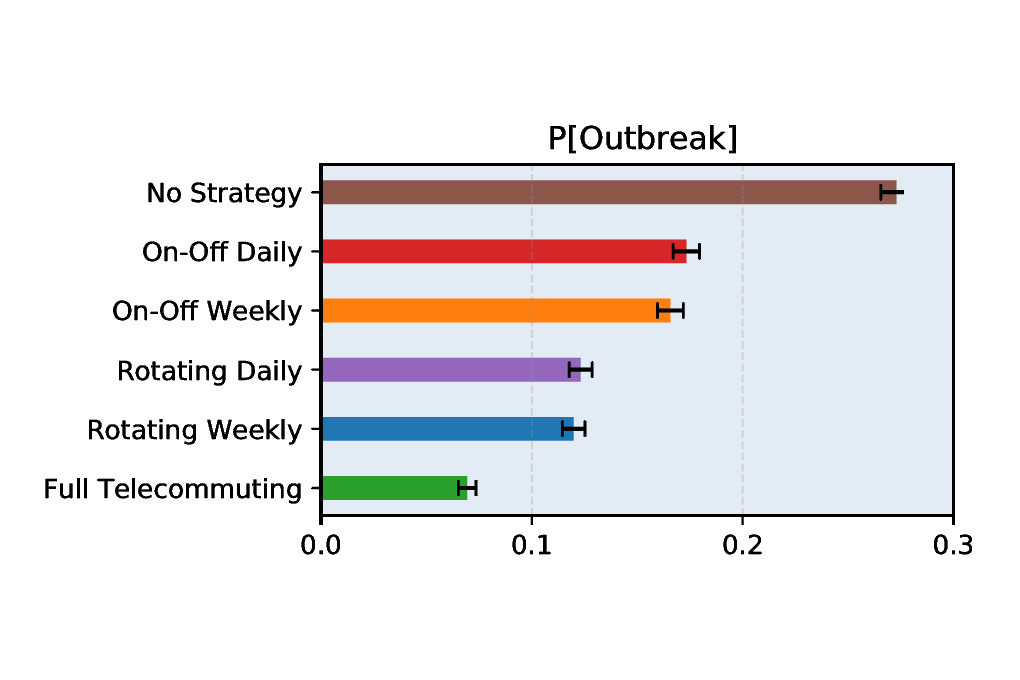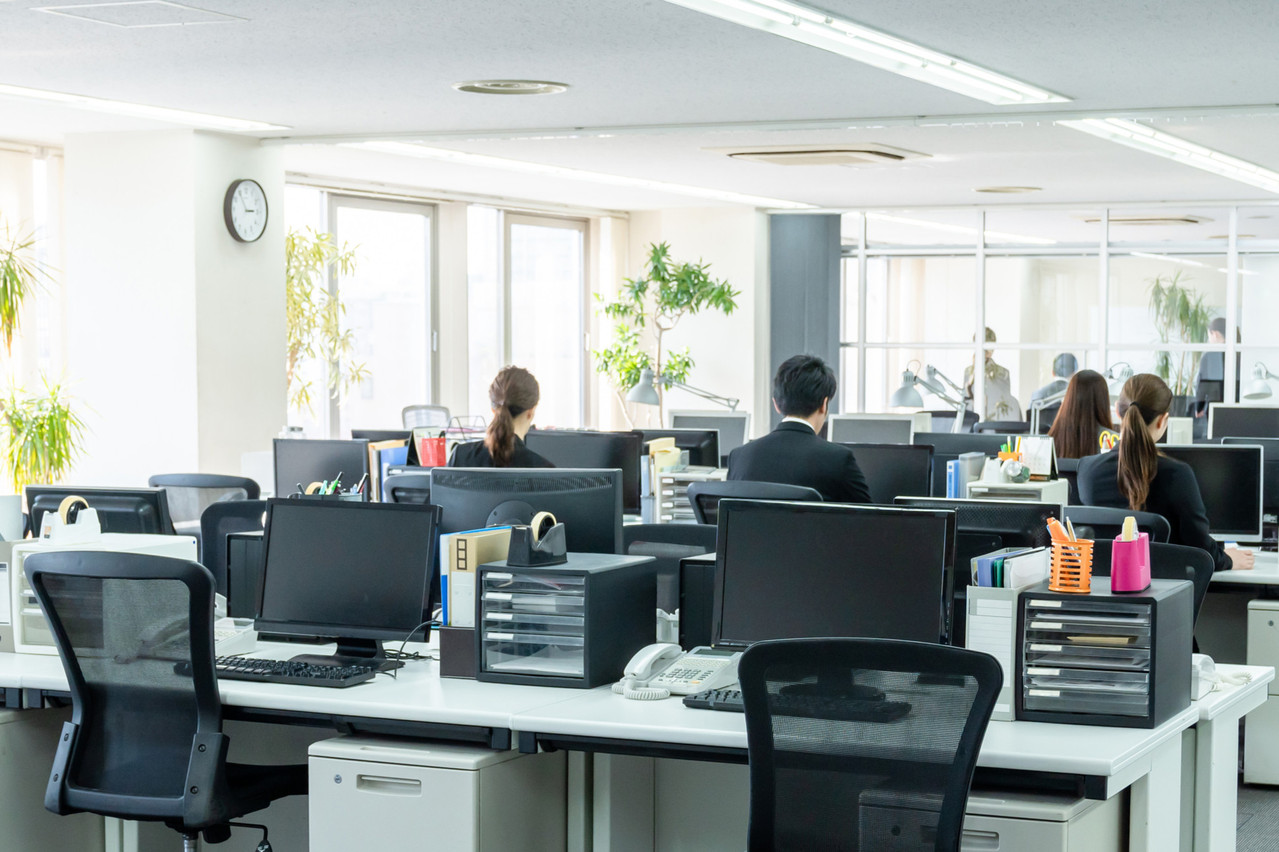With the start of the new school year, vaccination campaigns are underway and many companies want to bring their employees back to the office. But what is the best strategy to limit the risk of contamination? In France, scientists from the Centre national de la recherche scientifique (CNRS), the University of Versailles Saint-Quentin-en-Yvelines, the École normale supérieure (ENS) in Lyon and Inria, in collaboration with the Institut Pasteur and the Institut national de la santé et de la recherche médicale (Inserm), have analysed four partial teleworking methods.
They conducted their in a primary school, a high school and a workplace to estimate the probability of an epidemic (at least five people infected by a first case), the speed of transmission, and the average cumulative number of infections until the epidemics were extinguished. The study factored in a local reproduction rate of about 1.25.
In all cases, the results converge. And the most effective option is the division of teams with weekly rotation. Without teleworking measures, the risk of an epidemic is between 25% and 27%. It drops to 12% by switching the workforce every week.
The risk linked to a daily rotation of staff was slightly higher at 12.4%. Alternating completely, i.e. a week when everyone is present and a week when everyone stays at home, was less effective. The probability of an epidemic was estimated at 15.6% with weekly alternation and 17.4% with daily alternation.

The probability of infection decreases the most with telework, rotation and then alternation. Photo: Screenshot from the study
The study also considered a fifth option: full teleworking. This, unsurprisingly, outperforms all the others.
In Luxembourg, the rules for alternating between office and telework vary from company to company, each having to ensure the health and safety of employees. At school, the health arrangements for the new school year are to be presented at a press conference on 3 September.
This story was first published in French on . It has been translated and edited for Delano.
